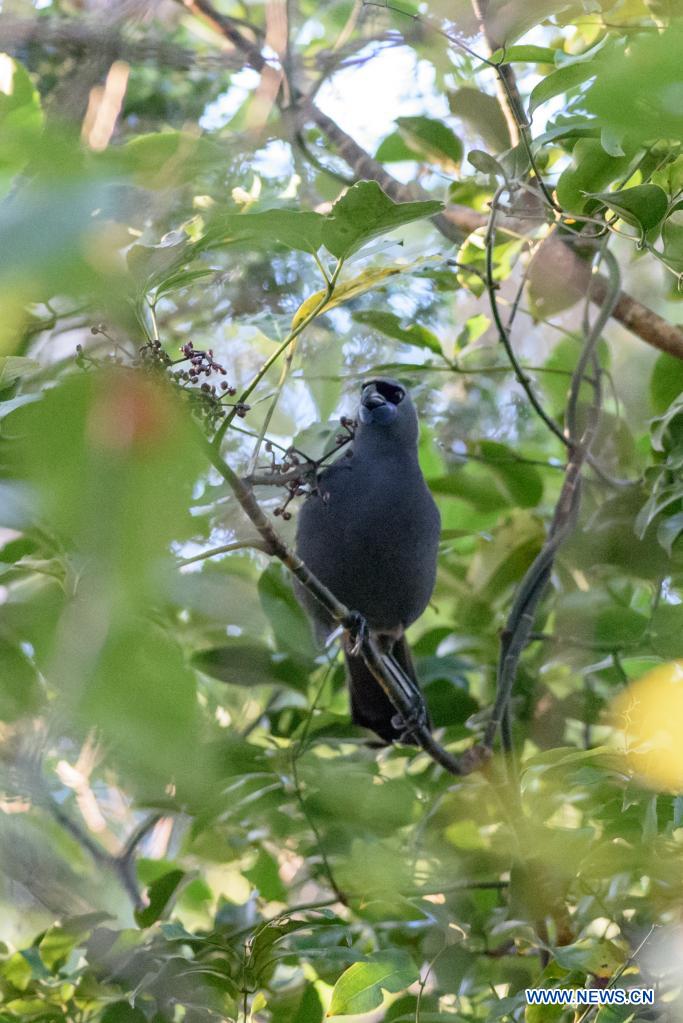
Undated photo shows a kokako in the woods in New Zealand. Recovery efforts over more than two decades have seen the North Island kokako, one of New Zealand's most iconic birds, brought back from the brink of extinction, New Zealand's Conservation Minister Kiri Allan said Friday. The kokako makes up two species of endangered forest birds which are endemic to New Zealand, the North Island kokako and the presumably extinct South Island kokako. (New Zealand's Department of Conservation/Handout via Xinhua)
WELLINGTON, March 26 (Xinhua) -- Recovery efforts over more than two decades have seen the North Island kokako, one of New Zealand's most iconic birds, brought back from the brink of extinction, New Zealand's Conservation Minister Kiri Allan said Friday.
"There are now 2,000 breeding pairs of this secretive forest bird across the North Island, up from just 330 pairs when recovery efforts began," Kiri Allan said.
The kokako makes up two species of endangered forest birds which are endemic to New Zealand, the North Island kokako and the presumably extinct South Island kokako. The kokako holds an important place in Maori mythology. Its iconic status is also due in part to its extraordinary song - "a loud, long, slow-paced sequence of rich, organ-like notes," and often used by film-makers to evoke the sense and spirit of New Zealand native forests. It also features on New Zealand's 50 note.
Protection of this species began in the late 1990s after the North Island kokako population dropped to as few as 330 breeding pairs - around 1,000 individual birds - scattered across the North Island.
"Translocation and intensive predator control undertaken by the Department of Conservation (DOC) over many years in known kokako habitats has been vital to rebuilding the species. Predator control work has included ground control and the use of biodegradable 1080 in aerial operations, the most effective tool for suppressing pests such as possums, rats and stoats in large rugged areas.
"At sites with effective ongoing predator control, kokako populations have increased by up to 50 percent each year. DOC's predator control efforts at four North Island sites have resulted in significant boosts to the bird's populations there, which is a testament to the value of this focussed pest work."
"In the last few months, DOC has completed several successful pest control operations at known kokako sites as part of the ongoing Tiakina Nga Manu program to protect the habitat for these and other native species. The Tiakina Nga Manu program is a key piece of work for DOC as it strives to recover our taonga native species."
"Alongside that, the department's Kokako Recovery Group oversees efforts to protect the species. Five staff with ecological expertise, working with external experts, provide advice on kokako protection methods, translocations and research, again contributing hugely to recovery efforts," the minister said.
A special event in Pureora Forest to celebrate this milestone included an early-morning forest walk, during which participants could hear the magical dawn chorus of the forest birds, with the kokako among them.
New Zealand is thought to have lost more than 50 bird species since the 14th century Maori settlement and later European settlement. Enditem